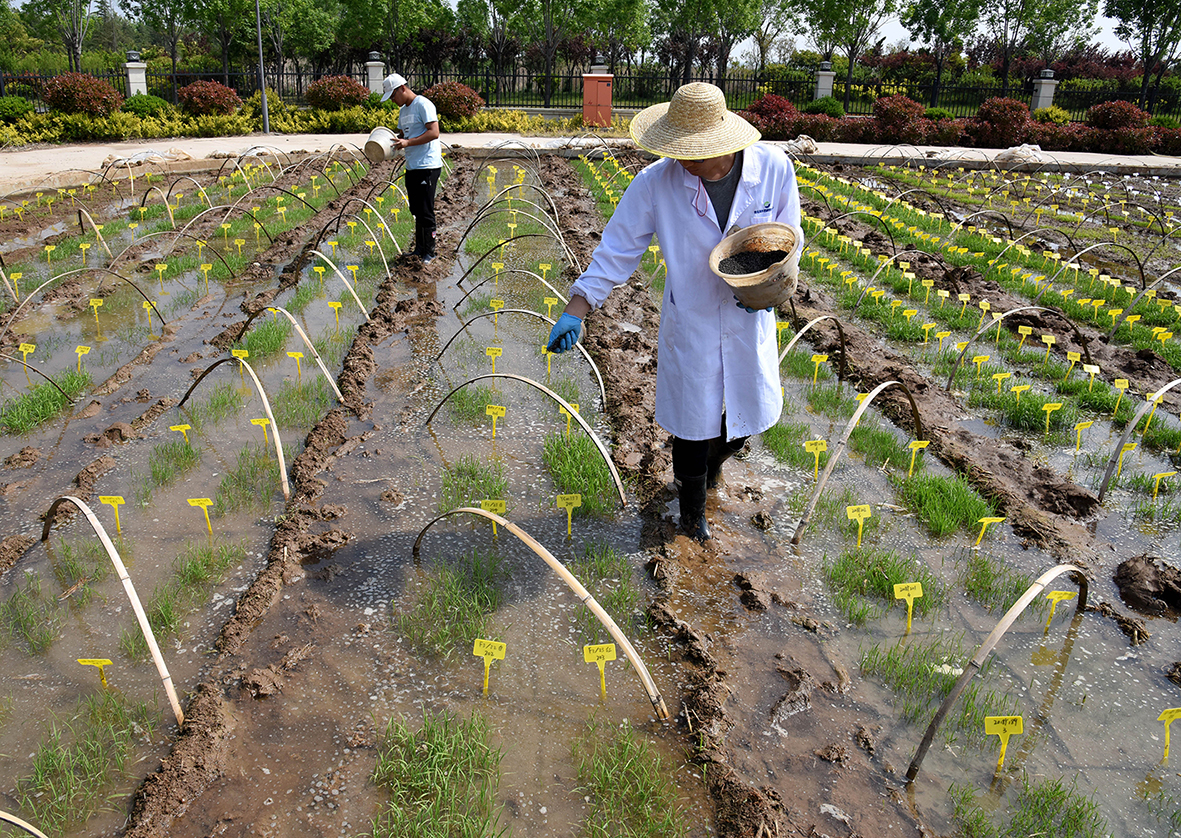New rice strain set to boost food security


Scientists have grown crops on land with high levels of salinity and alkalinity, aiming to raise yields and provide more basic foodstuffs. Cui Jia and Wang Xiaoyu report from Bayiawat, Xinjiang Uygur autonomous region, and Qingdao, Shandong.
Last year, the locals were shocked when Zhang Lishan and his colleagues harvested rice from an experimental paddy on the edge of the Taklimakan Desert in the Xinjiang Uygur autonomous region.
"Officials came to the field to see it with their own eyes, to touch the spikes of rice and believe that the crop can actually grow in soil with such high levels of salinity and alkalinity," Zhang said with a laugh, as he stood in the field in Bayiawat township, Kashgar prefecture, on the edge of the world's second-largest shifting sand desert.
"Also, it was the first time that many of the Uygur villagers had seen how rice, which they use to cook pilaf (a traditional dish of the ethnic group), actually grows."
About 134,000 hectares of farmland in Xinjiang have high levels of salinity and alkalinity, accounting for about 30 percent of the region's arable land.
When Zhang, a veteran rice expert at the Qingdao Saline-Alkali Tolerant Rice Research and Development Center in Shandong province, first visited the field and saw that it was covered by a thick layer of salt, he immediately understood how difficult it would be to grow anything there.
"It looked like the field was covered by snow. The salinity and alkalinity levels were way too high. At the time, the field's salinity level was 1.7 percent, but it fell to 0.5 percent after we grew rice for a season. The rice strains tested by the center can survive in soil within 0.6 percent salinity," he said. "Our ultimate goal is to improve the condition of the soil so we can grow other kinds of produce in that field."
Under Zhang's care, rice seedlings planted in Bayiawat in June have been growing healthily, adding a patch of green to the unrelenting beige of the sand dunes. This season's rice will be ready for harvesting at the end of next month, he said, when interviewed on Wednesday.
"The experimental field looks like any other piece of farmland, because the secret of its fertility lies beneath the soil," he added, referring to a subterranean network of pipes that provides a manageable environment for crops by constantly collecting and draining the salty, highly alkaline water that filters down through the soil after irrigation.
























